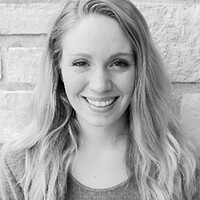'Wild Things' is a delicious dive into the world of children's lit
Sometimes bad literature serves as the inspiration for great literature. At least that was the case for iconic children's writer Beverly Cleary (author of "Ramona the Pest," "Beezus and Ramona," and "Henry Huggins,"among many others).
In her autobiography, Cleary recounts the moment she decided to write for kids: “Bow-wow. I like the green grass," said the puppy, in some tedious children's book she was reading. "How ridiculous, I thought," Cleary later said. "No puppy I had known talked like that. Suddenly I knew I could write a better book....”
In the estimate of journalist and critic Bruce Handy, Cleary’s “best books are gems of emotional insight and also, most important of all, they are very, very funny though never jokey – they’re comedies of manners for children.” Based on an interview with Cleary in 2006, Handy assures readers that she “likes fun. No fun? Throw it in the wastebasket.”
A boring read is the last thing readers have to worry about when approaching Handy’s first book Wild Things: The Joy of Reading Children’s Literature as an Adult. Inspired by reading to his own kids, Handy’s brief but deeply satisfying survey of children’s literature marries curiosity, humor, and downright excitement.
Don’t worry about agreeing with him – Handy cites several occasions on which he and his children sat emotional worlds apart as he read to them. The moment Christopher Robin tries to tell Pooh goodbye – tries to grow up – in A. A. Milne’s "The House at Pooh Corner" left Handy with “tears spilling down [his] face, and [his] heartless kids couldn’t have cared less. They were just glad the book, which they had endured to humor [him], was almost over."
"Wild Things" is not comprehensive in breadth, but Handy’s research – into the authors, their literature, and the history of the genre – makes for a read suitable with feet propped up and a comfortable chair. You’ll be there for a while.
The book traverses children’s literature by age of readership, beginning with picture books – including "Goodnight Moon," by Margaret Wise Brown, "The Tale of Peter Rabbit," by Beatrix Potter and Milne's "Winnie-the-Pooh," to name a few – and ending with older children’s fiction – "Little House on the Prairie" by Laura Ingalls Wilder, and "Charlotte’s Web" by E. B. White – stopping just short of the young adult genre.
Handy begins with "Goodnight Moon." It’s Brown’s ability “to see things from a child’s point of view” that makes the beautifully simple picture book essential “gear” for new parents, writes Handy. He notes that she steers clear of fantasy and brings new eyes to the ordinary, showcased in the book’s first lines: “In the green room / There was a telephone / And a red balloon / And a picture of— / [here we turn the page] / The cow jumping over the moon.”
Brown’s “sense of poetry and language, and her wit, her ability to seed simple declarative sentences with peculiarity” transforms simple verbiage into seeds for dreamworlds, says Handy. Brown’s sparse style, writes Handy – completed by Clement Hurd’s often surreal illustration – honored the unconscious power of children’s imaginations.
Handy also addresses the prolific Theodore Geisel, better known as Dr. Seuss, whose creative process Handy reveals was a bit unorthodox, just like his most memorable works.
Constraints catalyzed Seuss’s creativity: "The Cat in the Hat" pulled from a bank of 222 words, and "Green Eggs and Ham" was the result of a bet “that he couldn’t write a book using only fifty words. Geisel not only won; he … [used] only one-syllable words—anywhere being the sole exception.”
"Wild Things" is a roadmap into the world of children’s literature, letting readers taste the literature planted within history and supplemented with some critique and analysis. Handy doesn’t shy away from literary theory in his reading of Maurice Sendak’s "Where the Wild Things Are," or from the idiosyncratic world of fairy tales, from the Grimm brothers to Disney’s modern adaptations.
Handy wrestles with overt religiosity in C. S. Lewis’s "The Lion, the Witch, and the Wardrobe," the first installation of the beloved Narnia series. But even for Handy, irreligious himself, the reverent underpinning “feels like a full meal rather than the sugary snack or bland heap of roughage that religion so often seems to be.”
Handy highlights the sensitive and adept approaches to death in children’s literature, ending with a look at "Charlotte’s Web."
Did you cry at the end of "Charlotte’s Web"? If you did, your tears might have been provoked by Charlotte the spider’s sacrifice, or perhaps by the thought of the cycle of life, or maybe it was the relief of knowing that Wilbur could live out his hoggy days in peace. Whatever it was for you, Handy understands. Without surrendering to cheap nostalgia, Handy reminds you of the first time you read about death in a way that you could understand. It’s painfully sweet all over again.
Handy delivers with this witty and engaging survey of some treasured childhood classics. "Wild Things" showcases the universality of children’s literature, the best of which inspires readers of all ages.








